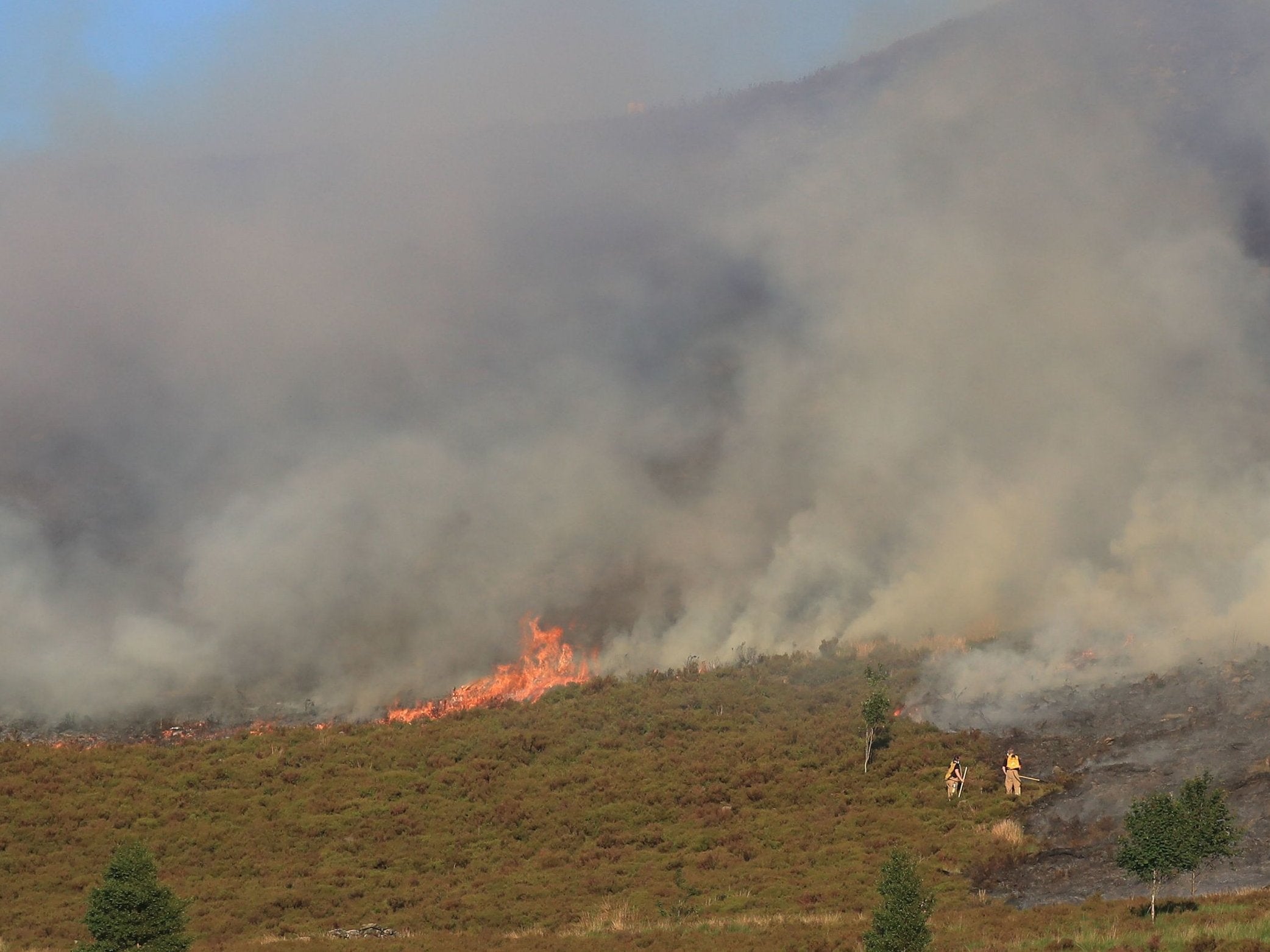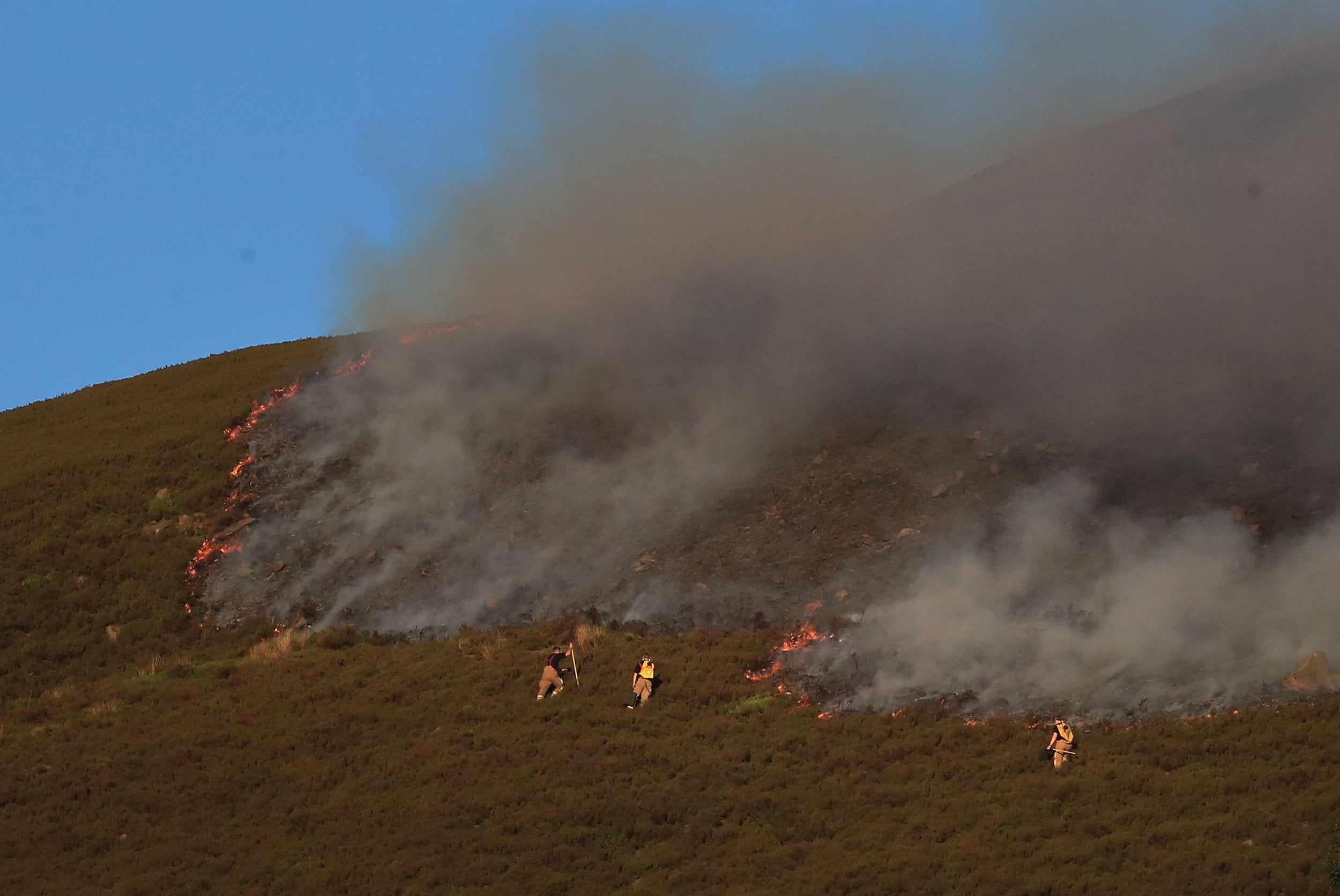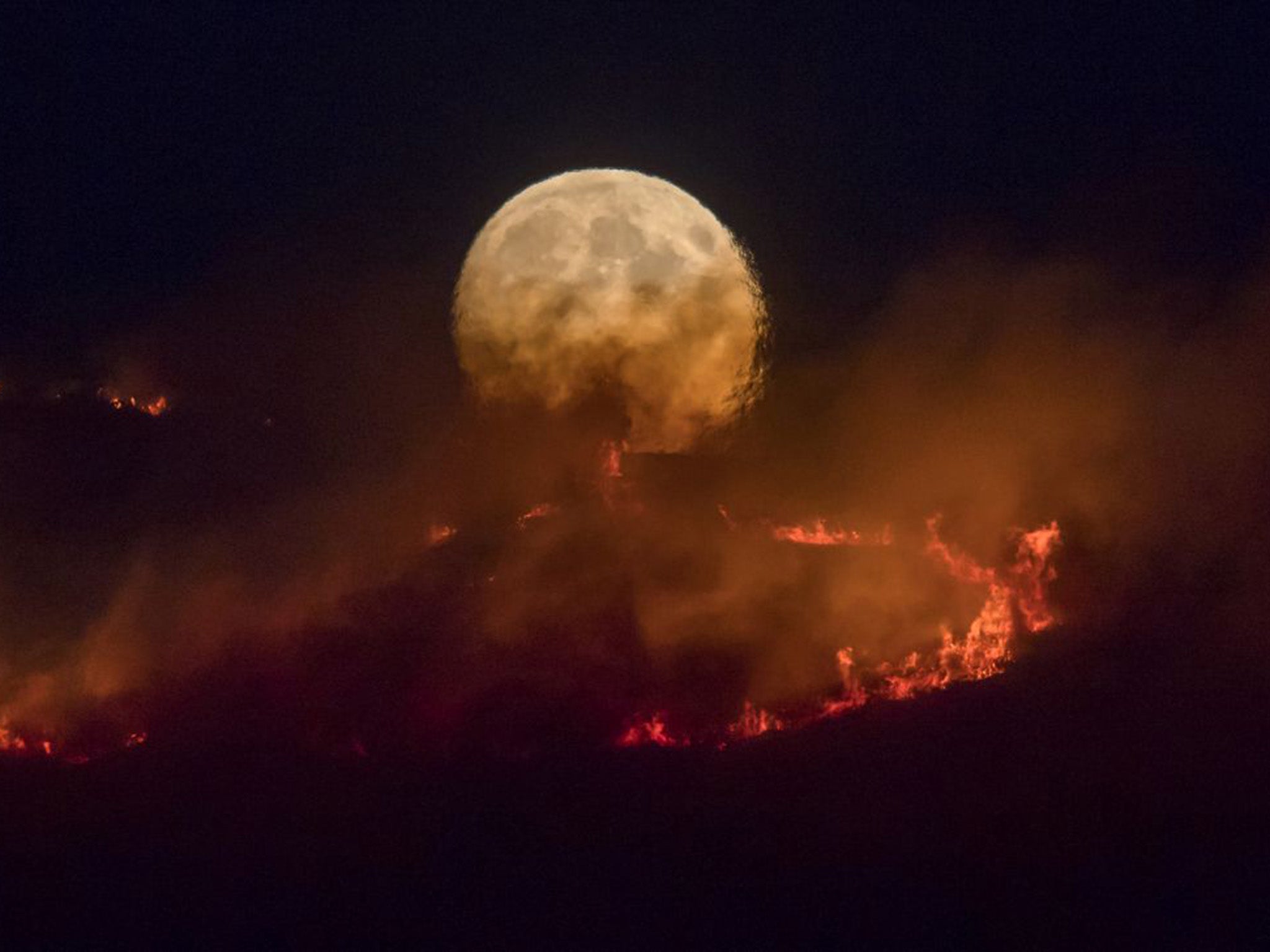Saddleworth Moor fire: Blaze 'could burn for weeks' with no rain forecast
Around 100 soldiers and a Chinook helicopter drafted in to help tackle smouldering moorland
Your support helps us to tell the story
From reproductive rights to climate change to Big Tech, The Independent is on the ground when the story is developing. Whether it's investigating the financials of Elon Musk's pro-Trump PAC or producing our latest documentary, 'The A Word', which shines a light on the American women fighting for reproductive rights, we know how important it is to parse out the facts from the messaging.
At such a critical moment in US history, we need reporters on the ground. Your donation allows us to keep sending journalists to speak to both sides of the story.
The Independent is trusted by Americans across the entire political spectrum. And unlike many other quality news outlets, we choose not to lock Americans out of our reporting and analysis with paywalls. We believe quality journalism should be available to everyone, paid for by those who can afford it.
Your support makes all the difference.A vast fire which has engulfed swathes of moorland in Greater Manchester could last for weeks, firefighters have warned.
Around 100 soldiers and an RAF Chinook helicopter have been deployed to help exhausted firefighters tackle the Saddleworth Moor blaze.
The troops from the 4th Battalion, Royal Regiment of Scotland, will join more than 100 firefighters who have been working rolling 12-hour shifts to tackle the seven square miles of the moor, which has been smouldering with pockets of fire since Sunday.
Around 40 homes were evacuated on Tuesday night in Carrbrook, near Stalybridge, and several local schools have been closed.
Rain is needed most to end the blaze, but none has been forecast, assistant chief fire officer Tony Hunter said.
“We have not seen an indication of any rain coming within the next couple of days, stroke weeks, so we can see this being prolonged for days, if not weeks.

“It is dependent on a downpour of rain – and it would have to be a significant downpour of rain because it is so dry it would be absorbed very, very quickly.
“If there is a change in wind to the opposite direction, it is a completely different picture then in terms of the fuel available to this fire.”
Mr Hunter said the firefront has widened to around two-and-a-half miles, in six different locations, and if the wind blows the flames back on to the moors it will act as a “fuel source” for the fire.
Forecasters have said no rain is predicted in the area for at least a week, with dry and hot weather forecast to continue until at least next Wednesday.
Light winds coming from the east are expected to continue for the next seven days.
Thursday is likely to be the hottest day in the area, with a high of 30C, but temperatures are expected to remain in the mid-20s for the next seven days.
RAF wing commander Tony Lane said: “We are here in support of the fire and rescue; there is a finite number of people, they were here yesterday, they have been here for a number of days, so it is actually providing a group of individuals that can provide support.
“We will make sure the soldiers are working alongside the fire and rescue personnel so they are going to be pairing up together.
“I think we are looking at one firefighter to three or four troops, so they can provide extra manpower to go and support them.”

Mr Hunter said the soldiers’ help would allow the service to keep other fire stations and engines available to deal with emergency calls as the moorland blaze continues.
He thanked local residents and businesses who had provided refreshments to officers and asked the public to “be aware” of the smoke and local conditions, keep access routes free for emergency services vehicles and stay away from where they are working.
Firefighters have struggled to contend with frequent changes in wind direction and problems such as the peat-embedded terrain, which requires large quantities of water to extinguish flames, on top of soaring temperatures.
If the fire worsens, Greater Manchester Fire and Rescue Service will be able to call on an RAF Chinook helicopter, based at RAF Odiham in Hampshire. It would be used to lift a high-volume pump, capable of pumping 7,000 litres of water a minute, to pump water up on to the moors.

Firefighters have used beaters, and a helicopter has been dropping water on the fires.
Fire chiefs say it is the worst moorland fire in living memory to hit Saddleworth, a vast tract of barren land, high on the hills straddling Greater Manchester, Yorkshire and Derbyshire.
The impact could even be seen from space as Nasa satellites picked up the plumes of smoke.
Air quality levels in the area are being monitored regularly, with people in affected areas urged to follow advice from Public Health England and keep their windows and doors closed.
The cause of the original seat of the fire – thought to be at Buckton Hill, Carrbrook – has not been established but fire chiefs said a detailed investigation would be launched at the appropriate time.
Additional reporting by Press Association

Join our commenting forum
Join thought-provoking conversations, follow other Independent readers and see their replies
Comments